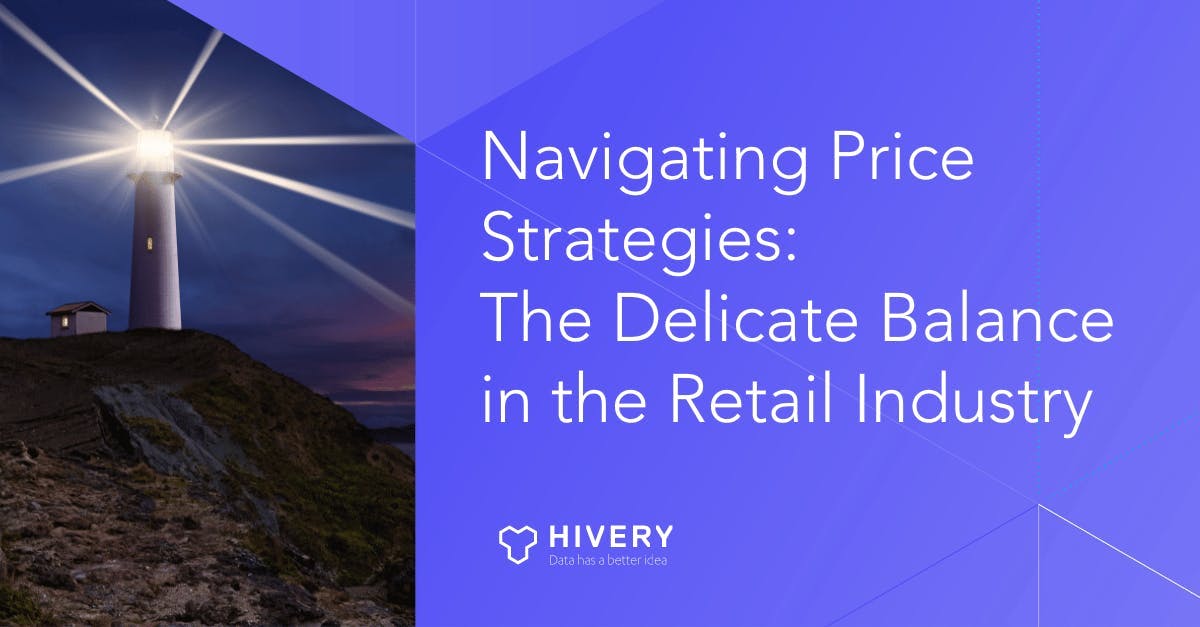
Navigating Price Strategies: The Delicate Balance in the Retail Industry
In the world of retail, setting the right price for a product is a delicate art. Manufacturers and retailers negotiate, each with their own goals and limitations. This blog post explores the intricate dynamics of price strategies, trade incentives, and their impact on consumer behavior. Join us as we uncover the challenges faced by manufacturers and the tough decisions they have to make in this ever-evolving industry. You can also hear the podcast edition.
The Complex Dance of Pricing:
Manufacturers cannot dictate the final selling price, just as retailers cannot dictate the cost price. Both parties have a stake in profitability and consumer demand. Manufacturers typically set a suggested retail price (SRP) based on their costs and desired margins. When retailers deviate from the SRP, it creates a ripple effect. Consumption may suffer if prices go above the SRP, but they can crunch profit margins if prices go below. It's a balancing act that requires careful consideration.
Trade Incentives and Retailer Strategies:
While manufacturers strive to offer the same base price to all retailers, additional trade overlay considerations come into play. Retailers with different strategies receive varying incentives. An everyday low-price retailer may receive bill backs to maintain their strategy. In contrast, a high-low customer like Albertsons might receive larger trade incentives during promotional periods. These trade incentives help align the retailer's strategy with the manufacturer's goals.
The Necessary Evil of Price Increases:
Price increases are often seen as a necessary evil in the retail industry. Rising raw material costs and inflation can leave manufacturers with no choice but to pass on some of the burdens to consumers. However, taking on multiple price increases can lead to challenges. Manufacturers must consider how they will reinvest the additional revenue into the business, particularly in promotions and marketing. It's a delicate balance between managing profitability and maintaining market share.
The Ever-Changing Landscape:
The economic landscape has shifted in recent months. Consumer prices have started rising faster than the cost of raw materials, signaling a need for price increases from manufacturers. However, the market can change quickly, leaving manufacturers in a precarious position. The need to offset price increases and retain market share becomes a pressing concern. Manufacturers must evaluate strategies like list price declines, increased trade incentives, or boosted marketing efforts to attract consumers. In this ever-evolving retail landscape, making data-driven decisions is crucial to stay ahead of the competition. Advanced AI solutions like HIVERY Curate can play a significant role in helping manufacturers navigate these strategies and optimize their outcomes.
HIVERY Curate is an AI-driven solution that harnesses store-level shopper data to provide valuable insights into consumer behavior and preferences. By leveraging this tool, manufacturers can run rapid simulations to evaluate different strategies and make informed decisions.
Let's explore how AI, as your co-pilot, can augment and assist in each of the mentioned strategies:
- List Price Declines: With HIVERY Curate's store-level data insights, manufacturers can analyze the impact of list price declines across different stores and SKUs. By simulating these changes, they can assess the potential effects on consumer demand, profitability, and market share. This enables manufacturers to make strategic pricing decisions while minimizing risks.
- Increased Trade Incentives: HIVERY Curate's rapid strategy simulation feature allows manufacturers to quantify the impact of increased trade incentives. They can analyze the effects on retailer collaboration, profitability, and overall market performance. By optimizing the trade incentive allocation based on data-driven insights, manufacturers can enhance their relationships with retailers and drive sales.
- Boosted Marketing Efforts: The space-aware assortment optimization capability of HIVERY Curate enables manufacturers to optimize store-level space and assortment to improve days of supply. Manufacturers can identify the most effective marketing tactics to attract consumers and boost sales by simulating different marketing strategies and their impact on assortment and space allocation.
HIVERY Curate offers features such as demand transfer analysis, improved collaboration between manufacturers and retailers, and actionable insights for store and SKU combinations. With its AI-powered capabilities, HIVERY Curate is a lighthouse, guiding manufacturers toward data-driven decisions and illuminating valuable insights into the complex retail landscape.
By leveraging HIVERY Curate, manufacturers can optimize their product assortments, streamline merchandising strategies, and make informed decisions that improve profitability and cater to shopper preferences. In an industry where every decision counts, the power of AI-driven solutions like HIVERY Curate becomes invaluable for manufacturers seeking a competitive edge.
Setting the right price in the retail industry is a complex endeavor. Manufacturers must navigate negotiations with retailers, trade incentives, and the ever-changing economic landscape. Balancing profitability with consumer demand requires constant vigilance and strategic decision-making. In this blog post, we've only scratched the surface of the intricate dance involved in pricing products. Stay tuned for more insights and strategies to thrive in the dynamic world of retail.
Related content you might be interested in:
- Mastering Assortment Price Pack Architecture: How AI streamlines product across multiple retailers.
- Progressive Grocer - Innovating Category Management: Assortment as a Service
- Podcast - Tyson Foods' AI-Driven Journey to Innovation & Brand Protection at Target Stores
- How To Get Assortment Space Contribution Index Optimized